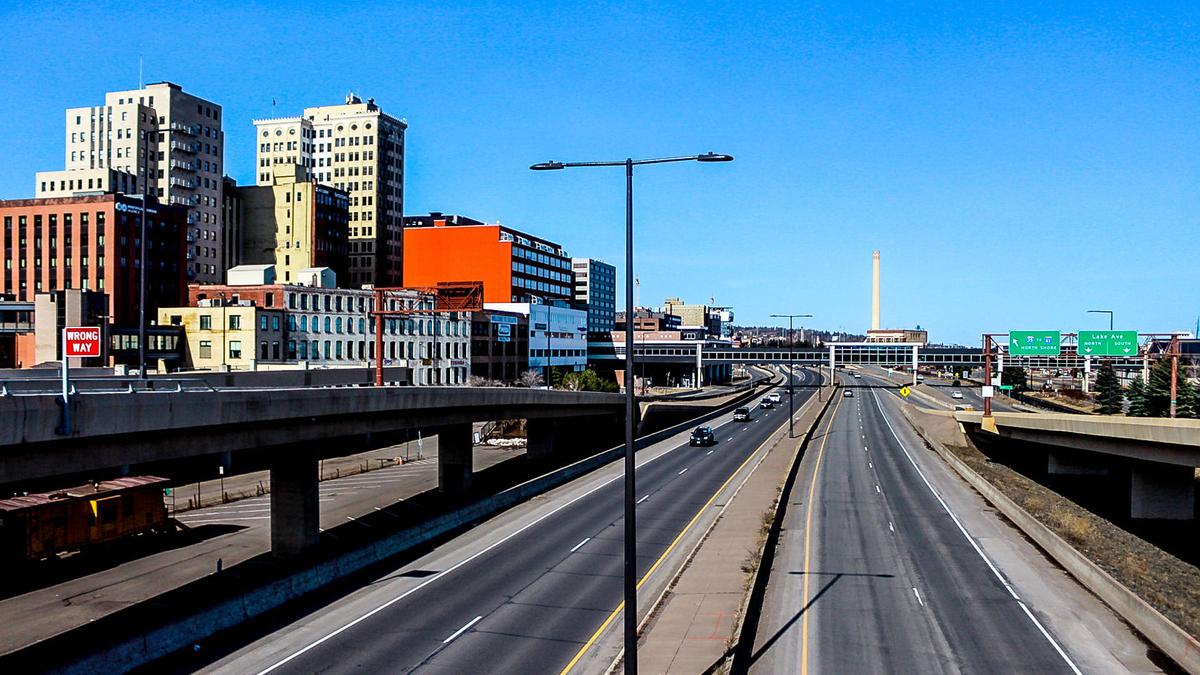The past few months, we at the University of Minnesota Duluth’s Bureau of Business and Economic Research (BBER) have been working on a study regarding the potential redesign of a portion of the I-35 highway in downtown Duluth that would connect downtown with the Canal Park district and the waterfront. You may have read about our involvement in the project in a January MPR news report or from our recent blog post.
While the campaign for the redesign was originally introduced by the Duluth Waterfront Collective (DWC), a local community organization, it’s actually part of a larger nationwide trend to connect communities that have been divided by highway infrastructure. Around the country, cities such as Chattanooga, Tennessee; Milwaukee, Wisconsin; Rochester, New York; and others have removed or resized freeways in their downtown business districts. There are many reasons why cities have chosen to right-size or remove freeways. The USDOT (2018) argues that, for most projects, cities' motivations for right-sizing fall into one of four categories or issues: damage and deterioration, obsolescence, neighborhood connectivity, and economic development and revitalization.
Locally, the DWC proposal to redesign I-35 through the downtown waterfront area has earned support from some key stakeholders. For example, the proposal is currently being considered as one of several design options for MnDOT’s Fifth Avenue West bridge repair project scheduled for 2031. And last August, the Duluth City Council voted unanimously to support the proposal and directed city administration to assess the project’s feasibility and seek federal funding. The DWC's proposal has also sparked additional design concepts for the corridor, such as one that would extend I-35's tunnel system west to Mesaba Avenue.
The purpose of our study is to examine the potential economic effects of such a re-envisioning of the corridor. Specifically, our study area includes the segment of the freeway between Mesaba Avenue and the Giche-Ode Akiing tunnel as well as the area immediately surrounding the freeway, which includes the library, Bayfront Park, the Duluth Entertainment Convention Center, Canal Park, as well as the downtown central business district.
As part of our research, we are collecting feedback through interviews and surveys of community members who have special interest in the downtown waterfront area. This community engagement effort will help us and the DWC understand what Duluth business owners, community leaders, and residents hope to see as part of a potential conversion, fear or are concerned about, and consider as the top economic development priorities for downtown Duluth. The effort is ongoing. Below is a sampling of the feedback we have received so far:
“I love the concept and think it has a tremendous amount of value. My hesitations would be the cost and accommodating traffic flow during peak times.”
“It’s rare to have the opportunity to think about how our city is built and to create fundamental change in the built environment on this scale. The fact that we have the opportunity to think on this level is unique.”
“Our existing infrastructure is overbuilt for the amount of vehicle traffic we currently have, and it is primarily focused on thru traffic—people driving through Duluth. It’s time to think strategically: What kind of infrastructure do we need for this important area of Duluth that prioritizes all modes of transport and all destinations?”
“I-35 divides two of our most crucial business corridors. Having a freeway that divides the two economic engines creates stagnation and leads to less business activity—less access for pedestrians and tourists. This redesign would be crucial for the economic development of Duluth.”
“[My] support for the project is dependent on access to the road for long-haul trucks, heavy machinery, logging, and access for existing port operations, along with ensuring that the needs of industrial businesses located in the corridor are accommodated.”
“DWC is a terrific start, but it doesn't go far enough. I’m more supportive of tunneling the freeway. We should hide/cover the highway to minimize its total impacts (e.g., noise, lights, safety).”
“The most exciting piece would be the opportunity for infill development across an area that feels like a dead zone—having increased density in an area that would have a lot of appeal for developers. It could be a catalyst for an exciting future for our community.”
Now we want to hear from you! If you are passionate about downtown Duluth, share your feedback on the subject via a survey questionnaire. All responses will be confidential, and your responses will not be attributed to you specifically.
Please respond to the survey no later than Friday, October 28. And feel free to share this link with others whom you feel should be involved: https://umn.qualtrics.com/jfe/form/SV_0jmQkAFWygunh1c
Thank you for helping us in our research on the potential economic effects of a redesign of the I-35 corridor.
